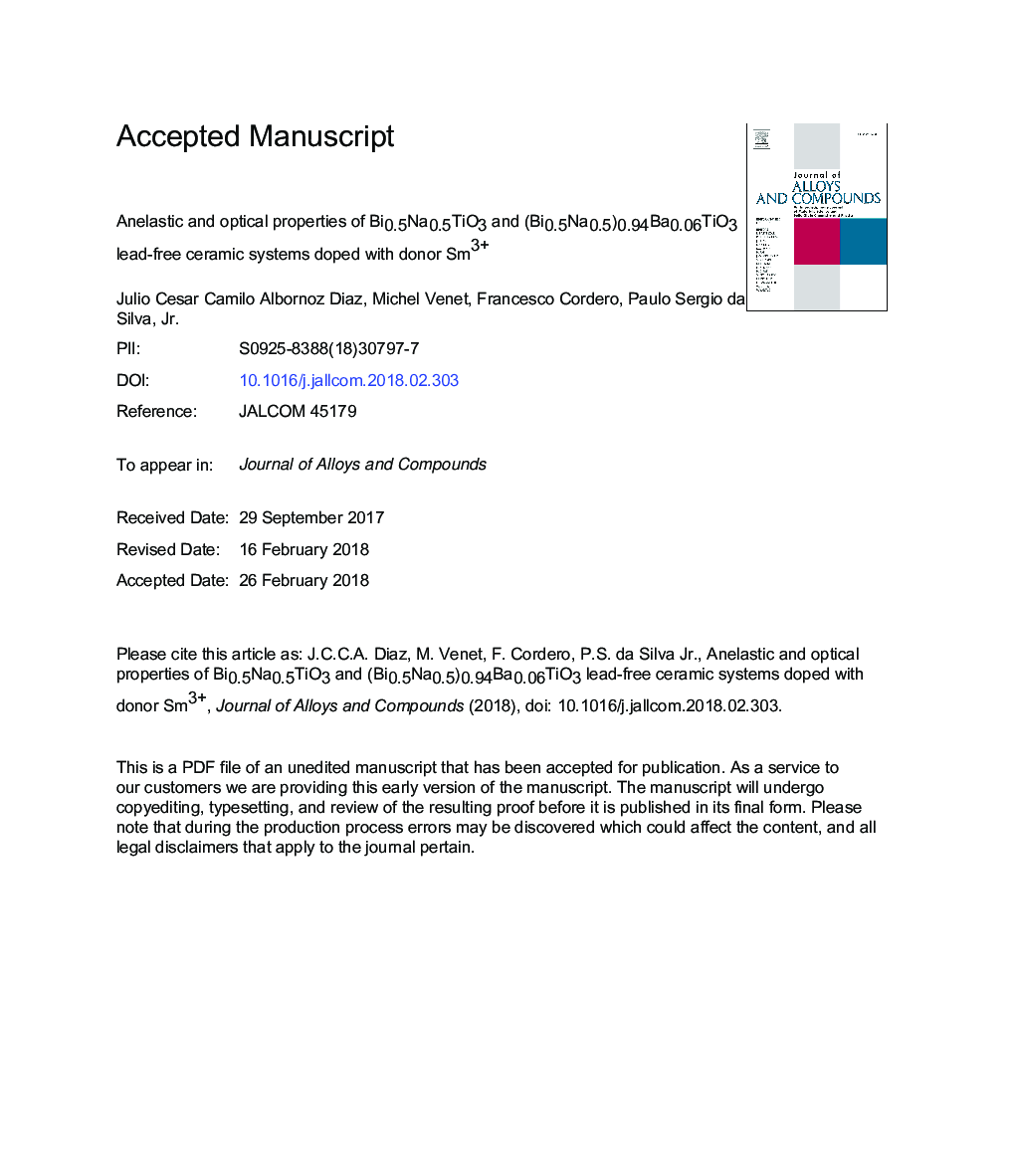| Article ID | Journal | Published Year | Pages | File Type |
|---|---|---|---|---|
| 7992769 | Journal of Alloys and Compounds | 2018 | 19 Pages |
Abstract
The effect of Sm3+ substitution in (Bi0.5Na0.5)(1âx)SmxTiO3 (BNT-100xSm) and [(Bi0.5Na0.5)0.94Ba0.06](1âx)SmxTiO3 (BNT6-100xSm) has been studied by conventional X-ray diffraction (XRD), mechanical spectroscopy and photoluminescence (PL) measures. Ceramic samples of BNT-100xSm (xâ¯=â¯0 and 0.02) and BNT6-100xSm (xâ¯=â¯0, 0.01, 0.02 and 0.04) were prepared via the conventional mixed-oxide method. X-ray diffraction patterns obtained for all the sintered samples at room temperature (RT) confirm the formation of perovskite structure without spurious phases. The BNT-0Sm and BNT-2Sm compositions have the same rhombohedral (R3c) crystalline structure at RT. The BNT6-0Sm composition is confirmed to be at the morphotropic phase boundary of the BNT-BT system, and when samarium is added, a clear evolution towards the tetragonal phase was observed, with corresponding disappearance of the rhombohedral peaks in XRD patterns. The analysis of the anelastic spectra indicate higher compositional disorder, reduction of tendency of the octahedra to tilt (in agreement with the stabilization of the tetragonal phase) and preferential substitution of Sm3+ in the position of Bi3+. New anomalies (induced by addition of Sm3+) are observed on the anelastic spectra. From the PL results we can confirm the presence of emissions corresponding to Sm3+ with small contribution of Sm2+, evidencing the different mechanisms for the charge balance needed in the donor doping.
Keywords
Related Topics
Physical Sciences and Engineering
Materials Science
Metals and Alloys
Authors
Julio Cesar Camilo Albornoz Diaz, Michel Venet, Francesco Cordero, Paulo Sergio Jr.,
